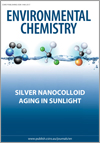EN18073Arsenic concentrations and speciation in Australian and imported rice and commercial rice products
 , Elliott Duncan, Hayden Martin, Peter Snell, Frank Krikowa, Rajani Jagtap, Simon Foster, Tariq Ezaz
, Elliott Duncan, Hayden Martin, Peter Snell, Frank Krikowa, Rajani Jagtap, Simon Foster, Tariq Ezaz  and Michael J. Ellwood
and Michael J. Ellwood
Environmental context. In countries where inhabitants are not exposed to arsenic-contaminated drinking water, food is the major source of potentially toxic inorganic arsenic. To complement the existing worldwide dataset on arsenic in rice, data are presented on Australian- and overseas-grown rice, and assessed in terms of possible risk. Only a diet comprising multiple serves of some rice products per day poses a potential risk to young children.




